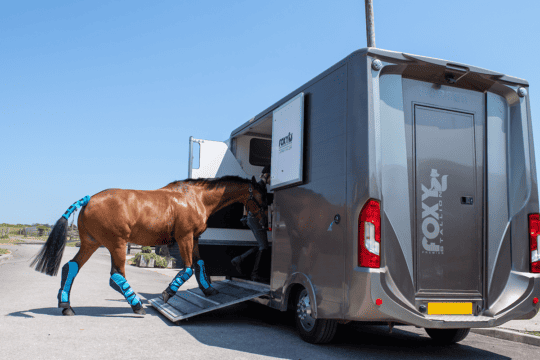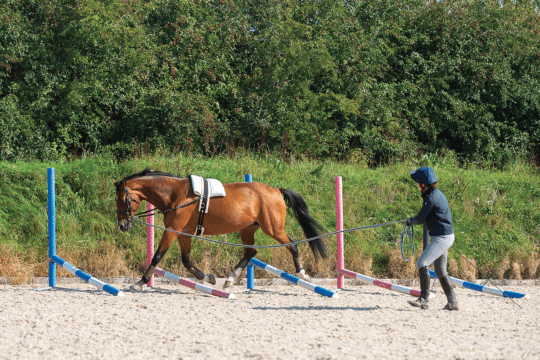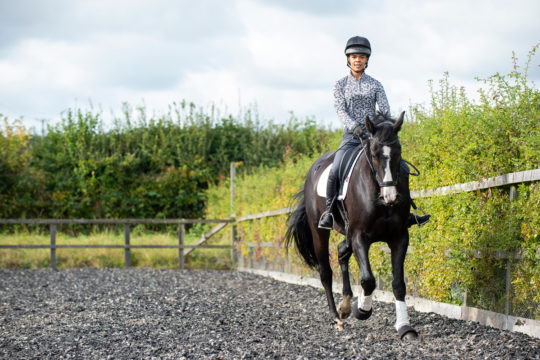Whether you want to improve the bond you have with your horse or are looking for fun things to do together if he can’t be ridden, check out H&R’s great groundwork ideas
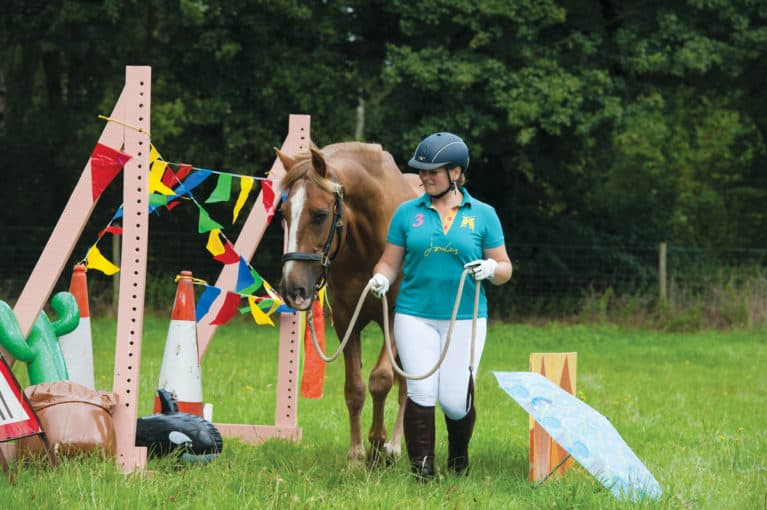
Owning a horse doesn’t mean you have to spend all your time in the saddle. There are lots of things you can do with him from the ground that’ll strengthen the bond between you and help improve his ridden work. Groundwork is useful if you have a horse who can’t be ridden, too, whether it’s due to age, injury or behaviour, as it allows you to exercise him and keep his brain engaged.
It’s not just horses who can benefit, either – if you suffer from nerves in the saddle, working with your horse in-hand can be a great first step to rebuilding your confidence. If you enjoy sharing your life with your horse but have no desire to ride, creative groundwork can be a rewarding pastime that will give you goals to work towards, too.
Top tip – Horses who have been retired due to age or have suffered an injury that rules out ridden work may still be able to enjoy gentle exercise, but check with your vet before you try an activity.
Not sure where to begin? Here are a few ideas to get you started…
Horse agility
Similar to handy pony, horse agility classes involve negotiating a course of obstacles, and they’re a great test of how you communicate with your horse and how well you work together. The great thing about horse agility is that it offers something for everyone, whether you want to try a few obstacles for fun or you’re keen to compete.
Most of the obstacles you’ll encounter on a starter-level horse agility course can easily be created from things you’ll find around the yard, such as cones to weave in and out of, and tarpaulin to walk over. At the more advanced levels, there could be hoops to jump through and bridges to cross, while the ultimate aim is to tackle courses with your horse at liberty.
There are horse agility clubs around the UK that hold training events or competitions, and you can even enter online shows. You’ll be sent a course plan to recreate, then ask someone to film you tackling it and send the footage in for judging – no transport required.
There are many benefits to having a go at horse agility. It’ll improve the partnership between you and your horse and help to spook-proof him, and it can be a great way to develop trust in a new horse before you get on board for the first time. It’s become popular with equine rescue centres, who find it a useful way to occupy the minds of youngsters and horses who can’t be ridden.
Did you know?
The Non-Ridden Equine Association was created to offer ideas, support and advice to people who don’t ride their horses.
Loose schooling
Most of the time you spend interacting with your horse on the ground will be when he’s tied up or being led, so why not let him run free? This is not only a great way for him to let off some steam, it can be a novel way of schooling him, too, and it’ll help you learn how to communicate with him through your body language.
A play session could be anything from allowing your horse to explore the arena and have a roll and a buck, to encouraging him to interact with objects such as a large, equine-friendly ball. Or you can try loose-schooling, which is still fun for your horse, but allows you to work on his suppleness and paces, and even tackle polework and jumping. It can also help you spot any anomalies in his movement – crucial if he’s come back into work following an injury or lameness.
Top tip – Only loose-school your horse in an enclosed arena with an even surface and safe fencing that’s high enough that he can’t jump out.
In a loose-schooling session, you can ask your horse to make transitions and encourage him to use his body freely. It’s important, though, that you direct your horse in a controlled way – you should never chase him.
You can also create a lane down the side of the arena using jump wings, and set out poles, small fences and grids. Make the lane wider at one end to guide him in and allow him to go down it a few times before you introduce any poles or fences. Then, build height gradually.
Wear a riding hat when loose-schooling, use a schooling whip to guide your horse and remember to stay well clear of his legs.
Top tip – If you’re experiencing a schooling issue, such as your horse picking up the wrong canter lead, loose-schooling him will let you see whether he’s able to overcome the problem when he’s at liberty, without your interference.
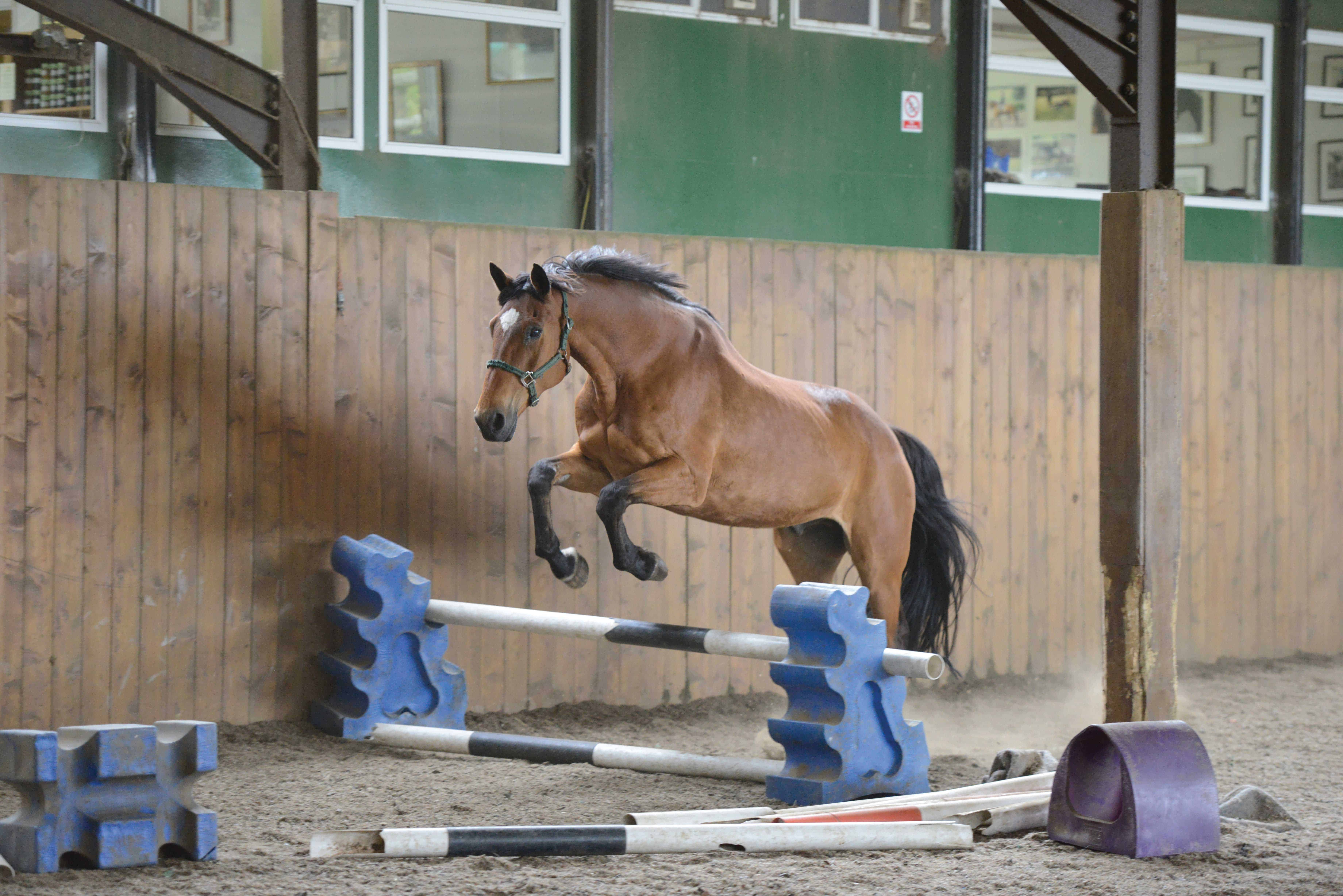
Going for a walk
Taking your horse for a walk adds a completely different dimension to your relationship. It’ll build trust between you and it’s a fun form of exercise. Horses in the wild roam for miles every day, so by walking together, you’re doing something very natural for him.
Like horse agility and playtime, going for walks will introduce your horse to new things and he’ll feel more confident with you alongside him, which makes it a great activity for spooky horses, or those who have a tendency to nap or lose confidence.
Allow plenty of time for your walks so you’re not feeling rushed and let him forage in hedgerows along the way, where it’s safe to do so. Nettles, cow parsley and dandelions are all things he’ll love to nibble.
It’s a good idea to practise in an enclosed area before heading out, making sure you can stop and turn your horse easily. Use a bridle and lunge line for safety, and don’t forget your high-vis if working on the road.
Top tip – You can walk your horse out in long-reins, which is a useful form of weightless exercise and can teach your horse to balance and carry himself. Practise in the school first and ask someone to walk alongside his head while he’s getting used to it.
Show him off
Showing gives you the chance to put your handling skills to the test, while offering you an opportunity to enjoy the excitement of a competition.
Lots of shows have in-hand classes and there’s usually something for everyone, from specific breeds or types of horse to fun classes for pretty mares and handsome geldings. If you’ve got an older equine, in-hand veteran classes can be a great way to extend his competitive career. Grab some schedules and see what’s on offer, and if you’re not sure what you’ll be asked to do or what to wear, go along and watch first.
Whatever class you’re aiming for, your horse must be obedient to lead in walk and trot, and you should also teach him to stand square in front of the judge without fidgeting. He’ll need to be smartly turned out and, if you have a mountain and moorland breed, don’t forget that his mane and tail should be left loose, not plaited.
If you’d love to show but don’t have transport, you can enter online classes. All you need to do is submit a photo or video and, because the emphasis is on your horse, you often don’t have to dress up in your show kit.
Leading the way
Did you know you can cross-country school your horse from the ground as well as in the saddle? Not only is this a clever way to introduce a young or inexperienced horse to natural fences, it gives you the opportunity to see what your horse is like across country without worrying about what happens in-between the fences. It’s a great way to boost his fitness and make him braver, too.
Before you venture onto a cross-country course, you must be proficient at lungeing your horse, both on the flat and over fences. Working over a cross-pole in the arena can help you develop this skill.
Depending on how much control you need, attach your lunge line to a lunge cavesson or bridle and you’ll need a schooling whip to help guide your horse, too. He should wear a set of brushing or tendon boots, while you should kit yourself out with a riding hat, gloves, and sturdy footwear you can walk and run in.
If your horse has never been around a cross-country course, he may find some of the obstacles, such as ditches and water, a challenge. Take your time and give him lots of reassurance, and you should find that he takes confidence from you being on the ground with him. Always keep safety at the forefront of your mind while working your horse over solid obstacles and allow plenty of space in case he hesitates, overjumps or rushes into, or away from, an obstacle.
Top tip – Jumping out of trot gives your horse time to assess what you’re asking him to do and it’s an easier pace for you to control.
Stay grounded
Whichever activity you try with your horse, remember that groundwork offers you the rare opportunity to enjoy him without any pressure to perform or necessarily progress. This gives you the chance to learn what truly makes him tick and you’ll reap the rewards of this nuanced training, no matter what you go on to do. It can even provide a foundation for a ridden career, as it creates an environment of trust and communication.




